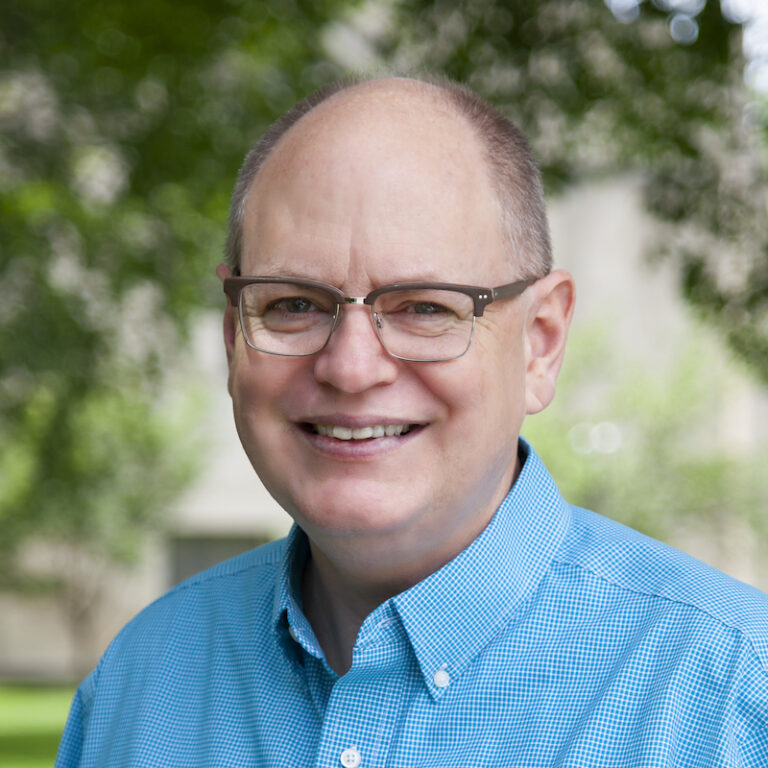NOVEMBER 2012: AS WE SEE IT
by Jeff Munroe
Have you ever thought about how much food there is in the Bible?
I’ll admit I hadn’t thought about it much until recently, when I spent a couple of days with Doug Worgul at the Buechner Institute of Faith and Culture at King College in Bristol, Tennessee. Doug Worgul has written a wonderful first novel called Thin Blue Smoke, a book about second chances, love and loss mingled among generous quantities of barbecue, Buechner, baseball, and the blues.
At the Buechner Institute, Worgul talked about food and the Bible, drawing on his expertise as marketing director of Oklahoma Joe’s Bar-B-Que in Kansas City, a place Anthony Bourdain named one of the “Thirteen Places to Eat Before You Die.” Among Worgul’s wealth of knowledge about barbecue is this: that the word itself has a Caribbean origin meaning “sacred fire pit.”
And there is something sacred about food. Food is not God, but God is food. Providing food is how God shows his love to us and we show our love to each other. Worgul commented on the significance of the resurrected Jesus asking for something to eat. “Theologians point to this passage as proof of Jesus’ bodily resurrection, as opposed to a merely spiritual or, lesser yet, a symbolic resurrection. I point to it as proof that Jesus was hungry. After all, he’d been to Hell and back, which can be an exhausting trip.”
Food is not just a metaphor. It is how we stay alive. Jesus needed something to eat. We all do.
Here’s a little more from his address: “In the Episcopal tradition of which I am now a part, the center of the liturgy—the worship service—is not the bringing of the word, but rather the breaking of the bread. After the scripture and the sermon have been delivered, and our sins confessed, we rise and move to the center and stand in line as one people, waiting to be fed. We move forward together toward the altar, slowly, patiently. Communion is not the bread and wine we will receive once we reach and kneel at the altar. The communion is the standing in line together. Together with people you love, and people you don’t particularly like, with people you don’t know, and people you know too well. All waiting to be fed. All waiting to eat.”
I’d argue that he’d have been better served by saying “Communion is not just the bread and wine . . .,” but give the guy a break. He’s a barbecue man/novelist, not a trained theologian. I get his point. There is something to all of us seeking to be fed together. His message made me think of the recent major renovation of the chapel at the seminary where I work. The new space is breathtakingly beautiful. It also makes a much different theological statement than the original space—the worship space I was accustomed to three decades ago when I was a seminarian. In the old days, we sat in pews looking past the back of each other’s heads up to an elevated chancel where a pulpit stood in the center. Today there are no pews, the seating is flexible, and most days it is arranged antiphonally, so we see the faces of the rest of the community as we worship. We gather around four symbols: the table, a cross, a pulpit, and a font. As you sit in worship, your eyes are also drawn upward to a warm light source in the middle of the ceiling. The space now has both a horizontal and vertical dimension.
It feels more complete to me. God feeds us in many ways. Through each other. Through the word. Through water. Through the cross. And at the table. The chapel reflects a sacramental view of reality.
Doug Worgul was born and raised a Baptist. In his early adulthood he worshiped in two different Reformed Church in America congregations. It makes sense to me that now, as a nationally recognized authority on the history and cultural significance of American barbecue traditions, he has found a home in a church centered not around water or word but around having something to eat.

